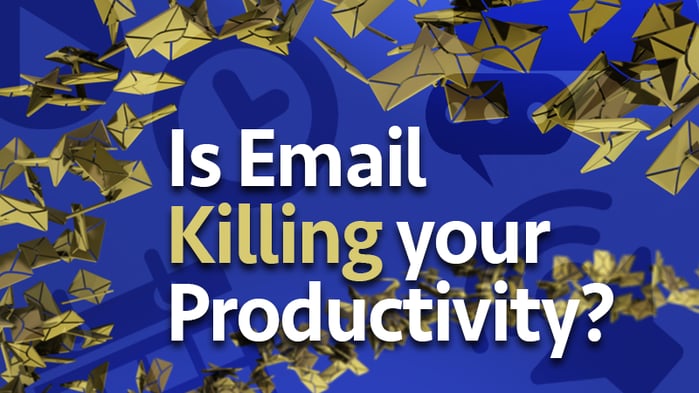
We’ve heard it before: email is a productivity killer. According to a study conducted by Loughborough University, it takes an average of 64 seconds to recover from a distraction. That’s 64 seconds spent trying to remember where you were before you stopped to check that email, read that text, or look at that link before you can get back on track. Multiply that by 96 -- the average number of emails a worker may receive in a day -- and you wind up with a grand total of 100 minutes of every day that employees spend recovering from distractions.
And it’s not just the time lost that’s killing productivity, it’s the energy spent always trying to pick up dropped threads and get back on task.
So what can you do to keep your team on track?
KILL THE MESSENGER.
Well, not literally of course, but there are an increasing number of companies that have eliminated inter-office email for the simple reason that it’s a stress-inducing time killer. The constant ping of incoming emails and IM’s, both work related and personal, creates an environment where getting anything accomplished can be like wading through mud. Sure, some degree of task switching may be beneficial -- it allows for short breaks that keep the mind fresh and challenged. But too much switching can lead to distraction and lack of focus, not to mention guilt, stress and anxiety as they fight to pull, or push their attention back to work.
“Though interruptions can often bring relevant information for one’s work in many cases, resuming after an interruption involves a cognitive cost to reorient to the task. Interruptions can become nested, leading to stress in keeping track of multiple states of tasks.” — Examining the Nature of Fragmented Work
When Atos first introduced their Zero Email™ they were considered mavericks. After all, how can a company with over 76,000 employees maintain fluid communication without email? But they’ve been doing it for several years now, and each year more and more companies are following suit.
DON’T PUSH, PULL.
If the problem you are trying to solve is the constant distraction of devices and applications pinging and ringing all day, you can’t simply replace them with other applications that also demand attention. What’s the point of replacing email with a group messaging app like Slack, when it too is going to be pushing notifications all day long?
The best solutions are those that allow employees control over when they get information -- that allow them to pull information in, rather than constantly having it pushed to them. That’s where collaboration platform such as Asana comes in. These are built to streamline communication and collaboration without the constant interruptions while maintaining a team project feel. Control over when to break to check on communications is handed back to the individual, and the noise making devices get put on a more meaningful mute.
SMART MAIL.
The solution for many companies may be not to kill email all together, but rather to simply learn to work smarter still. What this very well may look like is segmenting how we communicate by WHO, HOW and WHEN. For urgent on-deadline tasks, instant message tools are going to be far more efficient and capable of handling time constraints. On the other hand, long term projects that require a greater degree of tracking and management very well can be still be handled via email. Without the urgency for an immediate reply, there’s no need to constantly be jumping off to check the inbox.
The truth is that things are not going to get simpler and our brains are not likely to adapt to all these distractions any time soon. We are still going to be fighting to keep ourselves on track and focus, but what we can do is learn to harness these technologies, rather than always being at their beck and call.



